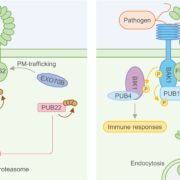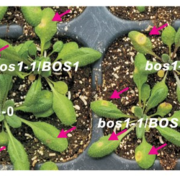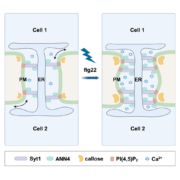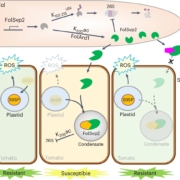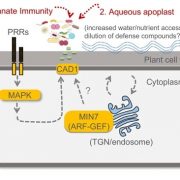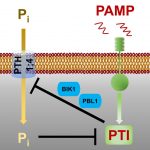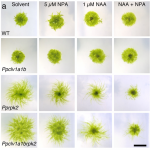Coordinated evolution of plant immune receptor repertoires (bioRxiv)
 In plants, immune signalling and the corresponding defence responses are initiated by direct or indirect recognition of pathogen molecules via immune receptors. In the plasma membrane, pattern-recognition-receptors (PRRs) recognize signs of invasion and pattern-triggered immunity (PTI) is initiated. Inside the cell, nucleotide-binding LRR (NLR) receptors recognise race-specific microbial effectors (or their actions) and effector-triggered immunity (ETI) is elicited. It was originally thought that PTI and ETI were independent but recent reports have shown that these two pathways share signalling components and work synergistically. This makes PRRs and NLRs functionally-dependent and therefore likely to have co-evolved. A preprint by Ngou et al, tested this hypothesis by analysing plant receptor repertoires. The authors reported that the expansion or contraction immune PRR repertoires in plants coincide with those of NLRs. This indeed suggests an evolutionary relationship between these receptors. (Summary by Mariana Schuster @MariSchuster) bioRxiv 10.1101/2022.01.01.474684
In plants, immune signalling and the corresponding defence responses are initiated by direct or indirect recognition of pathogen molecules via immune receptors. In the plasma membrane, pattern-recognition-receptors (PRRs) recognize signs of invasion and pattern-triggered immunity (PTI) is initiated. Inside the cell, nucleotide-binding LRR (NLR) receptors recognise race-specific microbial effectors (or their actions) and effector-triggered immunity (ETI) is elicited. It was originally thought that PTI and ETI were independent but recent reports have shown that these two pathways share signalling components and work synergistically. This makes PRRs and NLRs functionally-dependent and therefore likely to have co-evolved. A preprint by Ngou et al, tested this hypothesis by analysing plant receptor repertoires. The authors reported that the expansion or contraction immune PRR repertoires in plants coincide with those of NLRs. This indeed suggests an evolutionary relationship between these receptors. (Summary by Mariana Schuster @MariSchuster) bioRxiv 10.1101/2022.01.01.474684


